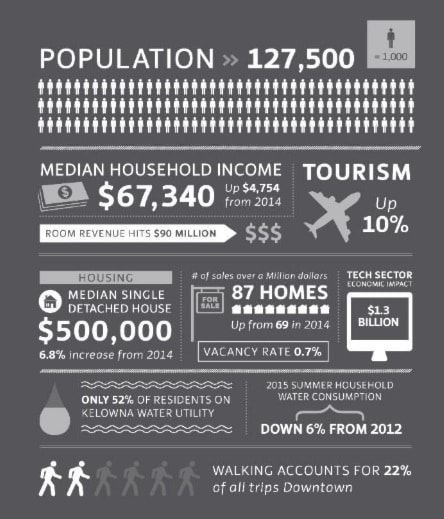A new, younger demographic is filing into Kelowna from other corners of B.C. and its toppling long held perceptions.
"Historically, migration within the province has had a strong link to retirees, but recent increases to intraprovincial migration have added a different dimension," reads the Community Trends report, which was presented to council Monday by Ross Soward, a planner specialist.
"For example, the largest age-group in 2014-2015 for new migrants was the 25-34 cohort, a group associated with first time homeownership, students and young families."
The rise in intraprovincial migration seems to be coming in large part from the Metro Vancouver area. In 2015 they accounted for 10.3 per cent of new residents in the region, compared to 16.4 per cent from 2016.
The report surmised that the shift is likely linked to people leaving the Lower Mainland and Vancouver Island due to increasing housing costs.
Also, the growth of UBC Okanagan has resulted in 1,000 graduates each year choosing to remain in the region.
While growth in the younger demographic has been long sought after by the city, the report acknowledges it will create new needs.
One continually highlighted demand in Kelowna has to do with housing.
There's a great deal of development, and 2016 gas seen the highest volume of building permits issued since 2008.
Most are on the multi-unit side of things, but the supply has yet to rise significantly.
That's created an affordability challenge.
The median cost of a single detached house is currently $500,000.
In turn, the rental rate hovers at around 0.7 per cent.
Kelowna’s 2016 population was estimated at 127,500, which represents an increase of approximately 4,000 residents over the last year.
The full report can be found at www.kelowna.ca.
